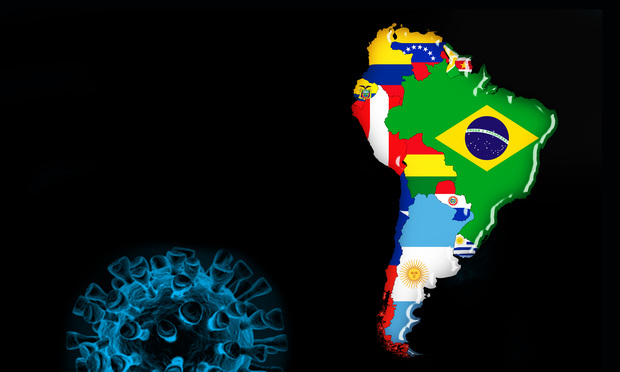
A Volatile Mix of Opportunity and Risk..
First, the world was crashing. Then it was the world recovering with stimulus cash galore.
The unimagined market dislocation during the initial months of covid-19 in 2020 was a boon to the distressed asset class. Companies and governments both borrowed at unprecedented levels to combat demand slumps and fight off complete collapse. Everyone was writing the comparison stories to 2008/2009.
Then boom…credit spreads decreased, and equity markets rocketed back. By the end of 2020, it was clear that many distressed shops thought they had missed the boat with some shops also closing doors…if you missed that opportunity, then you did not deserve to be in the business.
The storyline can sound factitious at some level. The decline was not as long-lasting as many economists predicted. And the rebound was too quick to match the horror stories permeating global news. To be fair, many individuals remain unemployed and countries have not seen job numbers return to pre-covid levels.
Regardless, distressed investing should not be solely predicated on allocating capital to ride the synchronized dislocation and recovery in the global market. Furthermore, some markets continue to face dislocation and the covid-19 headwinds.
Latin America, in particular, remains significantly impacted by the pandemic with three of its largest economies—Brazil, Mexico, and Argentina—among the world’s biggest covid-19 hotspots. And, as these country’s leaders struggle to stave off economic and health catastrophe one after another, (distressed) investors will find additional opportunity to allocate capital.
Brazil, Mexico…and Argentina?
Brazil
Brazil has long been on the radar of investors. Sovereign investors, principally those close to the government, liked the Lula da Silva and Dilma Rousseff years while some private investors were excited for the administration of President Jair Bolsonaro. Now, with Lula largely cleared to run in the 2022 general election, 2021 will be a critical year with fixing the “covid-19 situation” in the country as priority #1.
All the major sectors—retail, aviation, and hospitality—look in the doldrums today but will improve over time. The country’s good economic fundamentals will underwrite a strong recovery when covid-19 is under control. An impending political contest like no other in 2022 should ensure some progress on shortening that timeline to controlling the virus. Then investors should remember that Brazil is one of the world’s largest economies with a big population and its sizable consumption appetite. The bigger question is valuation in Brazil where asset prices are not exactly low or in the vicinity where some investors would expect them based on today’s demand.
Mexico
Mexico reached record levels for capital outflow in 2020 mainly due to the pandemic. Most emerging markets faced a similar outflow, but Mexico also saw its situation exacerbated by its antagonistic relationship with the U.S. government and former President Donald Trump. This reality is underpinned by the recovery in capital flows after the U.S. presidential election, in which President Joe Biden won, with 145.2 billion pesos ($7.28 billion) entering the sovereign bond market in November and December, according to the Bank of Mexico.
The Mexican economy will provide attractive opportunities with the Mexican manufacturing sector starved for both cash and consolidation. Most sector data show that suppliers and smaller-scale producers suffered during the pandemic across industries. Capital intensive industries, such as oil & gas, will remain vulnerable to commodity price movements despite all the current excitement with rising commodity prices. State-owned Pemex is a perfect example of a company that may be helped by higher oil prices but still cannot escape its bloated balance sheet. These opportunities may become plentiful in Mexico in 2021as covid-19 continues to batter the country.
And Argentina?
The Argentine bonds, which were restructured last year, continue to fall with some bonds pricing less than 30 cents on the dollar. Bond traders and investors both express concerns that President Alberto Fernández may balk at key economic reforms originally supported as part of the sovereign debt restructuring process, especially with mid-term elections in October.
The Fernández administration is very keen to avoid spending cuts, most notably to social programs, before that election. Thus, investors buying Argentine sovereign debt today will have to take a view on the current leadership’s ability to curb spending post-October elections and / or whether the country will head for yet another restructuring in the near-term. Corporate bond investors will make a similar assessment albeit with an additional evaluation of the relative beta of corporate’s ability to pay to the country’s ability to perform. Plus, there is this entire IMF discussion with Argentina that seems on-track then off-track depending on the week.
Hidden Risks and Fool’s Gold
The learning curve is short for many investors… foreign investors have long dabbled in these countries. Also, the calamity in the markets continue to help capital allocators investing in foreign currencies—most obvious being the U.S. dollar—though this can be negated by companies collecting revenues in dollars in these countries or the growing inflation concerns with the U.S. dollar.
That said, there are already a lot of eyes on Latin America. Capital inflows ticked up at the end of 2020 and asset and debt prices have accordingly priced up in recent months. Be careful not to follow a herd mentality into the region as the risks are plenty from economic to health to political.
A third wave of covid-19 is always possible with limited vaccine in the short term, which could suggest there may be another dip before the uptick. Still, the lack of clarity on the pandemic’s trajectory in the region due to the strategic unknown in combating the virus should not equate to sitting on your hands. The key is to avoid the fool’s gold by constantly re-evaluating your risk assessment because taking advantage of the dislocation in Latin America by riding the synchronized downturn then uptick in recovery is not a strategy (despite its success in 2020 in other regions) as the markets are likely to be somewhat volatile with abrupt disruptions (…like the politics in the region).
